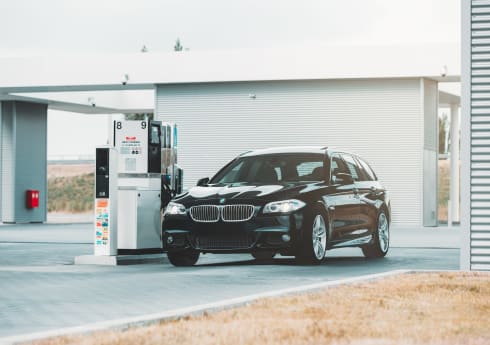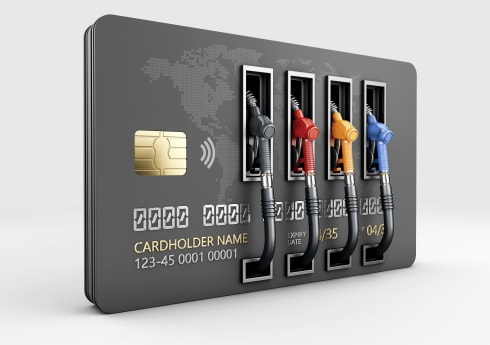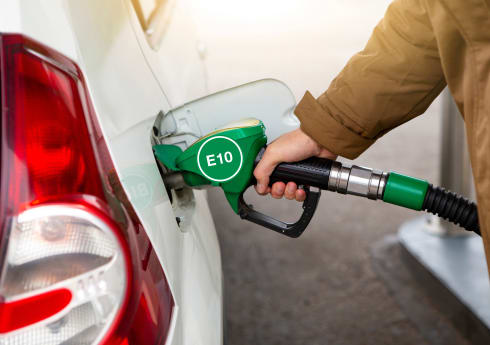How to Protect your Business From Fuel Card Fraud
Preventing fraud can be complicated, but there are ways to reduce the risk of fuel card fraud and its costly consequences. In this guide, we cover the crucial steps your business can take to cut down on potential budget losses.
What is fuel card fraud?
Fuel fraud and theft can cost businesses thousands of pounds.
Using fuel cards is usually safer than cash, debit or credit cards for businesses, but no payment method is foolproof. Some examples of this kind of fraud are:
- A third party clones the fuel card and uses it to purchase their own fuel
- The fuel card is stolen or lost, then used by an unauthorised third party
- Drivers fill up a company vehicle, then siphon fuel into their personal vehicle
- Drivers fill up a container at the station along with the company vehicle
- Drivers ask the station cashier if an inflated amount be charged to the company fuel card, then have the excess amount shared in cash

How do I stop fuel card fraud?
No way of paying is completely foolproof against fraud, but there are steps you can take to reduce the risks of it happening to your business. Such as:
- Place spending and volume limits: limiting the amount a driver can spend in a day, or the total fuel they can refill with, limits the amount that could be used fraudulently.
- Require PIN protection: give your drivers a PIN number and ensure they understand they shouldn’t share that PIN with anyone else.
- Communicate with drivers: let drivers know who to report a lost or stolen fuel card to, as well as the consequences of your fuel card fraud policy.
- Have a clear fraud policy: ensure all drivers and managers know how to handle fuel cards by creating an easy-to-access policy. Clarify any rules such as where to report any theft.
- Monitor transactions online: the fastest way to discover any card misuse is to view purchases on an online account to discover any discrepancies.
How to spot fuel card fraud
So, how do you spot fraud? Even if you’ve taken all the steps you can to reduce the risks, you should still keep your eyes open for any fraud.
In your security settings of the online account, you should be able to see transactions and filter by card, driver and so on.
Managers can use this system to spot any suspicious activity by looking for:
- Unexpected amounts of fuel purchased
- Drivers buying fuel outside of usual hours
- Fuel purchased at irregular stations
- Unusual amounts of activity
How does fuel card fraud happen?
Employees and company drivers may lose their cards or have them stolen. Any subsequent use by a third party is fraud. Fraud can happen if cards are stolen, or lost, and not reported as such.
If a fuel card is “lent” to an unauthorised driver or used for personal refilling, then this counts as fraud and could cost your business a significant amount of money over time.

Security settings to support fuel card fraud detection
Fuel card online accounts can include security settings. Having an online account makes it much easier to monitor transactions.
These can be individualised to each card as part of your fuel card fraud policy within your fleet. So, you can tailor purchase, time and volume limits for each card and driver.
We recommend going to your security settings and creating alerts if possible. Some accounts give email or app alerts should any driver go over a purchase, time or volume limit you have set.
In these cases, you can contact the individual to find out why these limits have been breached. If the card has been lost or stolen, you can then cancel the card from your account to stop any further transactions.
Can vehicle tracking help you spot fraud?
Yes. Vehicle trackers can show you the journey history of your company vehicles, so you can go to any fuel card transaction and find the exact place the fuel was purchased and where the vehicle went next.
If the fuel card use doesn’t match where the vehicle was located, then it’s most likely been cloned or stolen. You will need to contact your card provider.
If you are able to, it’s also best to cancel the card in your online account and request a replacement.
If the fuel card use does match where the vehicle was located, then a driver may be siphoning fuel or going past purchase limits for another reason.
You can also use vehicle tracking to check the mileage of the vehicle. See if the mileage aligns with the volume of fuel used. If not, then this is a clear red flag.
The confirmation will help you investigate and understand why this has happened as well as take action if necessary.
iCompario tip: check your insurance policy!
Depending on your business insurance policy, you may be covered for third-party fraud in causes of fuel card theft.
Can a fuel card be cloned?
Yes, fuel cards can be cloned, just like debit and credit cards. Card cloning is an illegal act where cards are copied to steal your money.
It is possible to clone one if it’s put through a skimmer machine. These machines can be fitted to an ATM or card reader machine in a shop. The skimmer then reads and steals the card details to be copied.
However, as fuel cards can only be used to purchase fuel and other vehicle-related items at the station and not online, they are a less appealing target to fraudsters.
Can someone else use my fuel card?
Someone else may use your fuel card if they make an illegal clone of it. This is fuel card fraud and may cost your business a significant loss if it’s not spotted right away.
To keep your fuel card as safe as possible, keep your fuel card in a secure place and never share it or your PIN with anyone else.
Ensure all drivers assigned a fuel card understand PIN safety. Writing down the PIN number on the card or on a piece of paper in your vehicle can be unsafe as a criminal could spot it and steal the information.
How fuel cards can help reduce the risk of fraud
Every debit and credit card holder is at risk of fraud, but businesses are an even bigger target because of vehicle assets, expenses and the number of employees with card access.
Fuel cards have many benefits to help you limit the risks of fraud, including:
- Fuel cards limit what drivers can buy: drivers can only use them to purchase fuel and vehicle-related items at certain stations, unlike cash and bank cards which can be used to buy anything. This makes them less appealing to steal.
- It’s easier to spot suspicious use: with cash or bank cards, you have more transactions to filter through compared to the limited purchases of fuel cards.
- Remove suspicious cards: contact your fuel card provider to cancel any cards with suspicious activity. Some providers may allow you to remove them online from your account. If you are able to cancel the cards quickly, fraudulent activity can be limited.
The fuel cards we compare offer security features to help you limit the risks of fraud while offering many benefits to reduce your overall costs.



